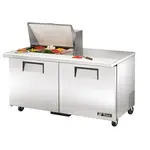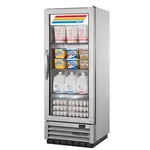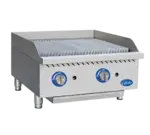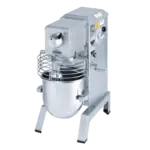
What Makes a Great Kitchen Brigade Work Like Clockwork?
- Understanding the Core Brigade Roles
- Seamless Communication Is Non-Negotiable
- The Role of Commercial Kitchen Equipment in Brigade Efficiency
- Mise en Place: More Than Just Prep
- Leadership Sets the Tone
- Cross-Training Strengthens the System
- Pre-Service Rituals Create Alignment
- Feedback Loops Keep the Machine Sharp
- Final Thoughts: It’s More Than Cooking—It’s Choreography
In the heat, speed, and pressure of a busy restaurant service, there’s little room for error—and even less for ego. Yet in kitchens around the world, teams of cooks, chefs, and expeditors come together night after night to produce consistent, high-quality dishes. What makes that possible isn’t just talent or passion—it’s a well-organized kitchen brigade system.
Born from the military-style structures of classic French cuisine, the brigade isn’t just tradition—it’s the engine of restaurant efficiency. When it works well, a brigade feels seamless, almost like a dance. But when communication breaks down or roles are poorly defined, service can spiral into chaos.
So what exactly makes a kitchen brigade run like clockwork?
Understanding the Core Brigade Roles
A kitchen team isn't just a random group of cooks—it’s a strategically layered hierarchy, where every role is essential to the system’s balance. Here's a breakdown of key positions and how they support the workflow:
Executive Chef (Chef de Cuisine)
The visionary and decision-maker. This person oversees menu creation, cost control, hiring, and overall kitchen standards. While they may not be on the line daily, they shape the kitchen culture and long-term success.
Sous Chef
The second-in-command. They run the kitchen during service, manage staff, handle orders, and solve problems on the fly. A strong sous is the backbone of daily operations.
Chef de Partie (Station Chef)
Each station (sauté, grill, garde manger, etc.) has a dedicated chef. These are the craftspeople who master their stations and ensure dishes are cooked to spec, every time.
Commis (Junior Cook)
Supporting station chefs, commis perform prep, plating, and assist during service. They're often still learning but are critical for keeping up with volume.
Expeditor (Expo)
The middle ground between front-of-house and back-of-house. The expo organizes ticket flow, controls timing, and ensures food is plated and sent out correctly.
Seamless Communication Is Non-Negotiable
A kitchen may be loud, but the most important voices are clear, fast, and purposeful. Communication tools and practices can make or break the flow of service.
Verbal Calls and Protocols
- “Yes, chef!” or “Heard!” creates a closed communication loop so instructions don’t vanish into the noise.
- Standard call-outs (e.g. “Fire table 12!” or “Walking in!”) reduce confusion.
- Avoid vague phrases; clarity matters more than volume.
Kitchen Display Systems (KDS)
In many modern kitchens, paper tickets are being replaced by KDS screens, which:
- Display orders in real time
- Reduce lost or misread tickets
- Track time for each dish
- Help chefs pace multiple tickets at once
Expo and Ticket Flow
The expediter acts as the orchestra conductor:
- Consolidates dishes so they arrive at the same time
- Checks presentation, garnishes, temperatures
- Calls back orders to confirm timing across stations
In fine dining, it’s often the chef or sous chef who takes on this role for added quality control.
The Role of Commercial Kitchen Equipment in Brigade Efficiency
Even the best-trained brigade can’t operate at full capacity without the right tools—and that’s where commercial kitchen equipment plays a critical role. From high-output ranges to blast chillers, equipment must be durable, intuitive, and tailored to your service style. The layout of appliances—ovens, fryers, refrigeration, prep tables—directly affects the speed and flow of the line. For example, placing a salamander broiler just steps from the expo station speeds up finishing, while a poorly placed fryer can disrupt multiple stations. Investing in smart kitchen technology, like combi ovens, programmable timers, and energy-efficient dish machines, reduces errors and downtime. But equipment isn’t just about power—it’s about ergonomics, safety, and accessibility, ensuring that your brigade can execute every shift with precision and minimum fatigue.
Mise en Place: More Than Just Prep
Ask any seasoned chef, and they'll tell you: the secret to smooth service isn’t what happens during—it’s what happens before.
Mise en Place = Everything In Its Place
This includes:
- Chopped and portioned ingredients
- Sauces ready and labeled
- Utensils and pans arranged per station
- Clean, uncluttered work surfaces
But mise en place isn’t just physical—it’s mental:
- Being in the right headspace before service
- Knowing your station’s flow and anticipating needs
- Resetting quickly between services for a fresh start
A chef with great mise en place can handle triple the volume with half the stress. It's discipline, foresight, and rhythm all rolled into one.
Leadership Sets the Tone
In a high-pressure kitchen, the tone comes from the top. Great kitchen leaders (whether executive or sous chefs) understand that screaming or intimidation only creates fear—not efficiency.
Traits of Strong Kitchen Leaders:
- Calm under pressure: If leadership loses composure, so does the team.
- Clear communicators: They give feedback fast and directly.
- Fair but firm: Expectations are high, but not unreasonable.
- Lead by example: They show the same mise en place and hustle they expect.
Veteran Chef Tip:
“You don’t lead with your voice, you lead with your prep list. If you’re prepped, they’ll follow.”
— Sous Chef, NYC Brasserie
Cross-Training Strengthens the System
A brigade becomes resilient when team members can flex. If someone calls out or a station is overwhelmed, cross-trained cooks keep the service moving.
Benefits of cross-training:
- Reduces reliance on any one person
- Builds mutual respect between stations
- Makes scheduling easier for managers
- Fosters problem-solving and adaptability
Many successful kitchens rotate junior staff through multiple stations during slower shifts to build experience and depth.
Pre-Service Rituals Create Alignment
Top kitchens don’t just jump into dinner service—they align the team first.
Typical Pre-Service Line-Up Includes:
- Menu updates (86’d items, specials, allergies)
- Tasting components so FOH/BOH are aligned
- Station checks for readiness
- Team goals (e.g. “Let’s aim for 12-minute average ticket times tonight”)
These briefings take 10–15 minutes but set the tone for the entire shift. They help teams hit the ground running instead of scrambling.
Feedback Loops Keep the Machine Sharp
Post-service breakdowns shouldn’t just clean the kitchen—they should improve the kitchen.
Key Debrief Questions:
- What slowed us down tonight?
- Any missed tickets or refires?
- Was the expo backed up?
- Did any dish consistently lag behind?
Fixing issues while they’re still fresh keeps the brigade improving over time.
Pro kitchens don’t wait for a bad review—they self-review every night.
Final Thoughts: It’s More Than Cooking—It’s Choreography
Behind every flawless dining experience is a brigade working in sync: shouting, plating, wiping, firing, and calling—all with precision and pride. A great kitchen isn’t just filled with skilled cooks—it’s a disciplined, communicating, purpose-driven team. It’s an environment where roles are respected, systems are followed, and passion is backed by preparation.
When that happens, food doesn’t just get cooked. It moves with intention, arrives with elegance, and reflects the power of a team that works like clockwork.
Bonus: Quick Tips to Tune Up Your Kitchen Brigade
- Conduct monthly cross-training drills
- Post visual station diagrams for newer staff
- Have one weekly feedback session, even for 15 minutes
- Empower your expo to own the flow
- Encourage cooks to “call and confirm” rather than assume





